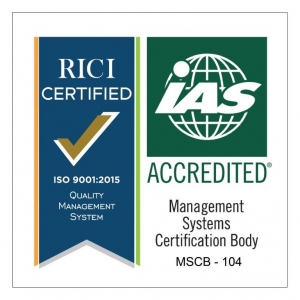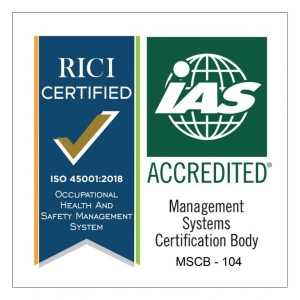- Passive wireless temperature sensors that require no power.
- Capable of measuring all relevant hot spots simultaneously such as busbars, breaker inputs/outputs, and cables.
- UHF partial discharge monitoring.
- Humidity and ambient temperature monitoring.
- Designed for continuously monitoring your MV/LV equipment 24/7, 365 days a year.
- Data communication via Modbus-RTU over standard RS485 bus.
- IEC61850, DNP-3, and MODBUS-TCP.
- User-configurable alarms.
CAM-5 Analytical Engine HMI
Local data aggregation, processing/analytics, and information display for all connected devices.
• Aggregates up to 360 sensors.
• Continuous monitoring and data trending critical assets.
• Multi-protocol support for system integration: Modbus, DNP3, TCP/IP, and IEC 61850.

REMOTE READER
The IntelliSAW IRM-48 Reader is a remote monitoring unit that provides temperature, partial discharge (PD), and humidity sensing for predictive condition-based monitoring of electrical power critical assets such as switchgear, circuit breakers, and bus ducts. Multiple IRM Readers can be bussed to a CAM-5 system or existing SCADA system providing immediate data display and alarming.

Air Interface & Partial Discharge Detection
- Optimize reader performance
- Dual mounting options – magnetic or bolt mounting
- Small size – easy to mount in restricted switchgear compartments
- Optimal impedance match to an IS485 reader for best range and performance
- Standard SMA connector for the cable to IS485 ports
- Wireless and Passive operation
- Ultra-high Frequency (UHF) detection with real-time noise cancellation algorithms
- Integrates with existing temperature and humidity monitoring platform
- Selectable frequency bands for monitoring unique asset components, including:
- Cable compartments
- Bus Ducts
- ISO bus ducts
- Reports noise floor, surface discharge, and internal discharges (PC) using a calibrated UHF dB measurement

Passive Sensors
Requiring no external power source
Simple to install & low maintenance
Electrically isolated, solving potential arcing and flashover issues

Humidity Sensor
The IntelliSAW Humidity Sensor provides real-time, continuous monitoring of relative humidity and ambient temperature to identify the potential for flashover.

FAQ
Why is temperature monitoring of electric power switchgear necessary?
Today, more than ever before, the customer demand on electric power transmission and distribution infrastructure is rising. This fact, coupled with aging equipment, leads more and more to electric power switchgear being stressed up to and beyond its original rated capacity. Increasing maintenance schedules dictated by the need to save costs do not help this situation. The operating temperature of switchgear has been found to have a very high correlation to the operational life of the asset: when switchgear are operated at very high temperatures, the likelihood of failure increases dramatically. Consequently, monitoring the temperature of likely failure points within electric power switchgear provides invaluable data on the health of that piece of equipment: early detection of incipient problems leads to rapid identification of problems and can provide significantly better maintenance scheduling that result in little or no down-time associated with switchgear failure.
Why is wireless monitoring of medium-voltage or high-voltage electric power switchgear temperature required?
“Corona is a serious issue in metal clad switchgear because of its highly destructive nature. It is the cause of most flashovers in medium-voltage metal clad electrical equipment. The fundamental cause of this symptom is an electrical breakdown of air brought on by electrical stress and poor air quality within the switchgear. If not rectified a flashover is imminent, possibly causing enormous damage and injury to personnel.” (HiVec Canada, Inc. abstract of a whitepaper on Avoiding Flashover in Medium-Voltage Switchgear;
see http://www.power-technology.com/downloads/whitepapers/operations/file2760/)
Clearly, if there is a need to understand the health of switchgear by monitoring its temperature, the method of measuring temperature MUST NOT contribute to any failure mechanisms, especially flashover. For medium-voltage and high-voltage equipment, anything that touches medium-voltage or high-voltage conductors must never violate the air-dielectric separation design requirements for the operating voltage. It is almost impossible to guarantee the dielectric separation needed for such equipment with wired temperature monitoring solutions. Both the safety and liability concerns of wired solutions prohibit their use in these applications.
Wireless solutions for temperature monitoring of medium-voltage and high-voltage switchgear are a necessity.
What are the wireless solutions for measuring medium-voltage or high-voltage electric power switchgear?
There are several classes of solutions. One is hand-held optical monitoring of switchgear temperatures using infrared thermal detectors. This class of solutions has the advantage of safety because the measurement can be done without opening the switchgear cabinet. It also has the advantage of simplicity and accuracy. However, it requires an expensive infrared window in the switchgear cabinet: this window often limits the measurement locations. Additionally, it requires a trained operator and the measurements are sampled, typically over long intervals (months). Between the sampling intervals, no data is available from this technique on the health of the asset.
Another class of solutions is wireless temperature monitoring using radio technology. There are two types of this class, one employing battery-powered wireless sensors and one employing passive wireless sensors. Both of these types of sensors overcome many of the limitations of infrared sensors: wireless radio-based sensors can be made that are small, easily mounted on conductors in switchgear and that never violate the air-dielectric separation requirements for medium-voltage or high-voltage equipment. Also, another significant advantage of this class of temperature monitors is that measurements can be made on very short timescales (on the order of seconds) over very long time durations (on the order of years), effectively providing continuous monitoring of switchgear health.
However, battery-powered switchgear temperature monitoring systems have a significant drawback: at some point, the batteries wear out. Also, battery technologies currently available exhibit significantly degraded service life at the elevated temperatures that are the norm in properly operating switchgear. Battery lifetimes degrade even more when the switchgear is operating close to or beyond the rated capacity. To replace batteries, the switchgear must be shut down: this is a significant operational drawback. This, coupled with the rather short battery lifetimes in normally operating switchgear, make battery-powered wireless temperature monitoring equipment unsuited for medium-voltage and high-voltage electric power switchgear.
Passive wireless radio-based temperature monitoring systems are ideal for medium-voltage and high-voltage electric power switchgear. Once installed (typically during normal service periods), passive wireless temperature sensors have all the advantages of battery-powered sensors but have service-free lifetimes exceeding 20 years. Properly installed passive radio-based wireless sensor systems are truly set-and-forget monitoring instruments for medium-voltage and high-voltage switchgear.
Why should electric power switchgear monitoring be continuous?
There have been numerous cases of the load through medium-voltage or high-voltage switchgear changing very rapidly, leading to catastrophic results. This can be a result of new loads imposed on a circuit that are unknown to the switchgear operator, or can be a result of events such as animals unexpectedly altering the air-dielectric behavior in switchgear, with disastrous results (both for the animal and for the switchgear).
Continuous monitoring of switchgear temperature can identify rapidly changing conditions on the switchgear and can initiate predictive and preventative measures early enough to prevent loss of equipment, and, in many cases, interruption of service. Alerts, alarms and trend-tracking based on temperature data are critical when the environment of the switchgear changes quickly.
What areas in typical electric power switchgear need continuous temperature monitoring?
Typically, a medium-voltage or high-voltage switch has at least four areas of concern to operational staff: the input bus bars in the cabinet, the input connections to the switch or breaker itself, the output connections from the switch or breaker and the output cable connections. Each of these areas has three phases of power, so there are 12 locations that ought to be monitored to assess the health of the equipment. Clearly, the absolute minimum critical locations are the inputs and outputs of the switch or breaker, so at a minimum, the temperature of 6 locations is of the highest importance.
How are IntelliSAW wireless temperature monitoring systems integrated into a typical asset management system?
The IntelliSAW wireless temperature monitoring system consists of three main components: the passive wireless temperature sensors, the reader and the network connecting all of the readers together with asset management infrastructure.
As can be seen in the figure, the sensors along with the reader antennas are deployed wherever temperatures need to be monitored, usually in the elevated-voltage compartment. The readers are installed in the low-voltage compartment, generally with other monitoring and communication equipment. Each of the readers is connected to each other and the asset management system via one or more networks, possibly using intermediate gateway devices. The gateways provide aggregation and data-management functions between low-intelligence readers and high-functionality asset management systems. Additionally, the gateways can provide local diagnostic and test functions as well as diverse data archival functions.
What data, in addition to temperature, is available from IntelliSAW wireless temperature monitoring systems?
IntelliSAW wireless temperature monitoring systems provide data to the asset management network using industry-standard Modbus protocols over a standard RS485 serial bus. Each reader on the RS485 bus is configured to have a unique Modbus address during commissioning. During commissioning, each reader is configured to report the data from the sensors associated with it. The temperature data for each sensor (from an addressed reader) is provided in Modbus holding registers that can be read with standard Modbus commands. In addition to temperature, the holding registers also provide the received signal level, the measurement standard deviation and an indication of data validity for each sensor of an addressed reader.
What are the power requirements of the IntelliSAW wireless temperature monitoring system?
IntelliSAW wireless temperature monitoring systems utilize passive wireless temperature sensors that need no external power to operate. All necessary power is provided by the RF interrogation signal. IntelliSAW wireless temperature monitoring readers require either 5VDC or 24VDC external power to operate.
IntelliSAW
IntelliSAW Inc., a leading provider of systems that protect electric power transmission and distribution equipment by measuring and monitoring temperature, humidity, and partial discharge using advanced sensor and analytic technologies. The IntelliSAW suite of predictive maintenance, continuous monitoring systems enables users to reduce maintenance costs and increase quality of service. The systems also increase personnel safety and protect equipment from significant damage.
Lorem ipsum dolor sit amet, consectetuer adipiscing elit. Aenean commodo ligula eget dolor. Aenean massa. Cum sociis natoque penatibus et magnis dis parturient montes, nascetur ridiculus mus.
Donec quam felis, ultricies nec, pellentesque eu, pretium quis, sem. Nulla consequat massa quis enim.











